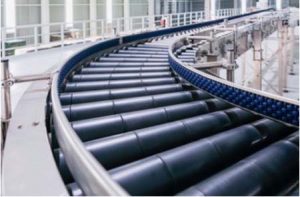 Conveyors are used to transport materials horizontally, vertically, at an angle, or around curves. Hazards depend on the type of conveyer, the material conveyed, the location of the conveyor, and how close the conveyer is to workers.
Conveyors are used to transport materials horizontally, vertically, at an angle, or around curves. Hazards depend on the type of conveyer, the material conveyed, the location of the conveyor, and how close the conveyer is to workers.
Conveyors eliminate or reduce manual material handling tasks, but they introduce amputation hazards associated with mechanical motion.
The fact that conveyors run steadily and smoothly may
lull you into a false sense of security when you’re around them. Don’t fall into this trap. Conveyors can be dangerous.
Best Practices When Using Conveyor Belts:
- Ensure that power is disconnected during maintenance and repairs by locking out and tagging out energy at the source. It’s best if the person doing the work personally disconnects and locks the power and restores it following the work.
- Ensure that adequate guarding is installed to prevent any contact with moving parts of a conveyor, including rollers and head and tail areas.
- Install pull cords for emergency stops at strategic locations to prevent or minimize injury after accidental contact.
- Never attempt to cross a moving conveyor belt except at suitable crossings.
- Install practical and usable belt crossing facilities at strategic locations, including near controls, when height allows.
- Install audible and visible warning systems to signal the start of the conveyor.
- Establish policies and procedures for performing specific tasks on conveyor belts and ensure proper training.
AVOID A MOURNING…ACKNOWLEDGE A WARNING!!
Download flyer: STOTW_1140_Conveyor Safety Download Spanish flyer: STOTW_1140_Conveyor Safety_esp

